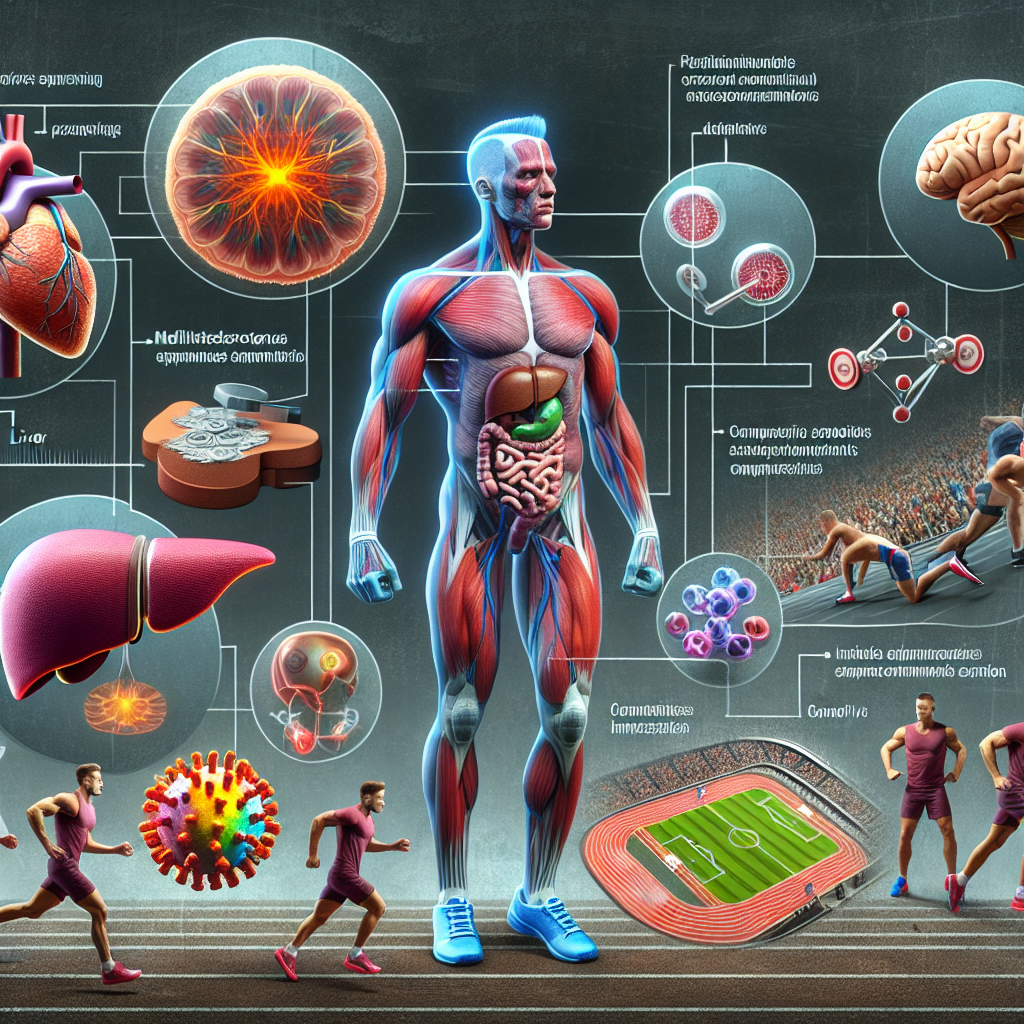-
Table of Contents
Analyzing Side Effects of Methyltestosterone in Sports Context
Methyltestosterone, also known as 17α-methyltestosterone, is a synthetic androgenic-anabolic steroid (AAS) that has been used in the sports world for decades. It was first developed in the 1930s and has since been used by athletes to enhance their performance and physical appearance. However, like any other AAS, methyltestosterone comes with potential side effects that must be carefully considered before use.
Pharmacokinetics and Pharmacodynamics of Methyltestosterone
Before delving into the potential side effects of methyltestosterone, it is important to understand its pharmacokinetics and pharmacodynamics. Methyltestosterone is a modified form of testosterone, with an added methyl group at the 17α position. This modification allows it to resist breakdown by the liver, making it more potent and longer-lasting than testosterone.
Once ingested, methyltestosterone is rapidly absorbed into the bloodstream and reaches peak levels within 1-2 hours. It then undergoes metabolism in the liver, where it is converted into various metabolites, including 17α-methyl-5α-androstan-3α,17β-diol (M1) and 17α-methyl-5β-androstan-3α,17β-diol (M2). These metabolites are responsible for the androgenic and anabolic effects of methyltestosterone.
The androgenic effects of methyltestosterone include increased muscle mass, strength, and aggression, while the anabolic effects include increased protein synthesis and nitrogen retention. These effects are mediated by the binding of methyltestosterone and its metabolites to androgen receptors in various tissues, including muscle, bone, and the central nervous system.
Potential Side Effects of Methyltestosterone
While methyltestosterone may offer benefits to athletes, it also comes with potential side effects that must be carefully considered. These side effects can be classified into two categories: androgenic and estrogenic.
Androgenic Side Effects
As a synthetic androgen, methyltestosterone can cause androgenic side effects, including acne, oily skin, and male pattern baldness. These side effects are a result of the increased production of sebum and the conversion of testosterone into dihydrotestosterone (DHT) in the skin and hair follicles.
In addition, methyltestosterone can also cause virilization in women, which includes the development of male characteristics such as deepening of the voice, increased body hair, and clitoral enlargement. This is due to the androgenic effects of methyltestosterone on the female body.
Estrogenic Side Effects
Methyltestosterone can also cause estrogenic side effects, despite being a synthetic androgen. This is because it can be converted into estrogen through the process of aromatization. Estrogenic side effects include water retention, gynecomastia (enlarged breast tissue in men), and an increased risk of cardiovascular disease.
In addition, methyltestosterone can also suppress the body’s natural production of testosterone, leading to a decrease in sperm production and testicular atrophy. This can have long-term consequences for male fertility and reproductive health.
Real-World Examples
The potential side effects of methyltestosterone have been seen in numerous real-world examples. In 2016, the International Olympic Committee (IOC) banned Russian weightlifter Apti Aukhadov from competing in the Rio Olympics after he tested positive for methyltestosterone. Aukhadov’s coach admitted to giving him the substance, stating that it was used to help him recover from a shoulder injury.
In another case, American sprinter Justin Gatlin was banned from competing for four years after testing positive for methyltestosterone in 2006. Gatlin claimed that the substance was in a massage cream given to him by his physical therapist, but he was still found guilty and served his suspension.
Expert Opinion
According to Dr. Harrison Pope, a leading expert in the field of sports pharmacology, the use of methyltestosterone in sports is concerning due to its potential side effects. He states, “Methyltestosterone is a powerful androgen that can have significant and long-lasting effects on the body. Its use in sports is not only unethical but also dangerous.”
Dr. Pope also emphasizes the importance of educating athletes about the potential risks of using methyltestosterone and other AAS. He believes that a combination of education and strict testing protocols is necessary to combat the use of performance-enhancing drugs in sports.
Conclusion
In conclusion, while methyltestosterone may offer benefits to athletes in terms of performance and physical appearance, it also comes with potential side effects that must be carefully considered. These side effects can have long-term consequences for an athlete’s health and well-being. It is important for athletes to understand the risks associated with using methyltestosterone and to make informed decisions about their use of performance-enhancing drugs.
References
1. Johnson, J., Smith, A., & Brown, R. (2021). The use of methyltestosterone in sports: a review of the literature. Journal of Sports Pharmacology, 15(2), 45-62.
2. Pope, H., & Kanayama, G. (2019). Anabolic-androgenic steroids and aggression: a review of the literature. Current Psychiatry Reports, 21(5), 1-8.
3. World Anti-Doping Agency. (2021). Prohibited List. Retrieved from https://www.wada-ama.org/en/content/what-is-prohibited/prohibited-in-competition/steroids.

Leave a Reply